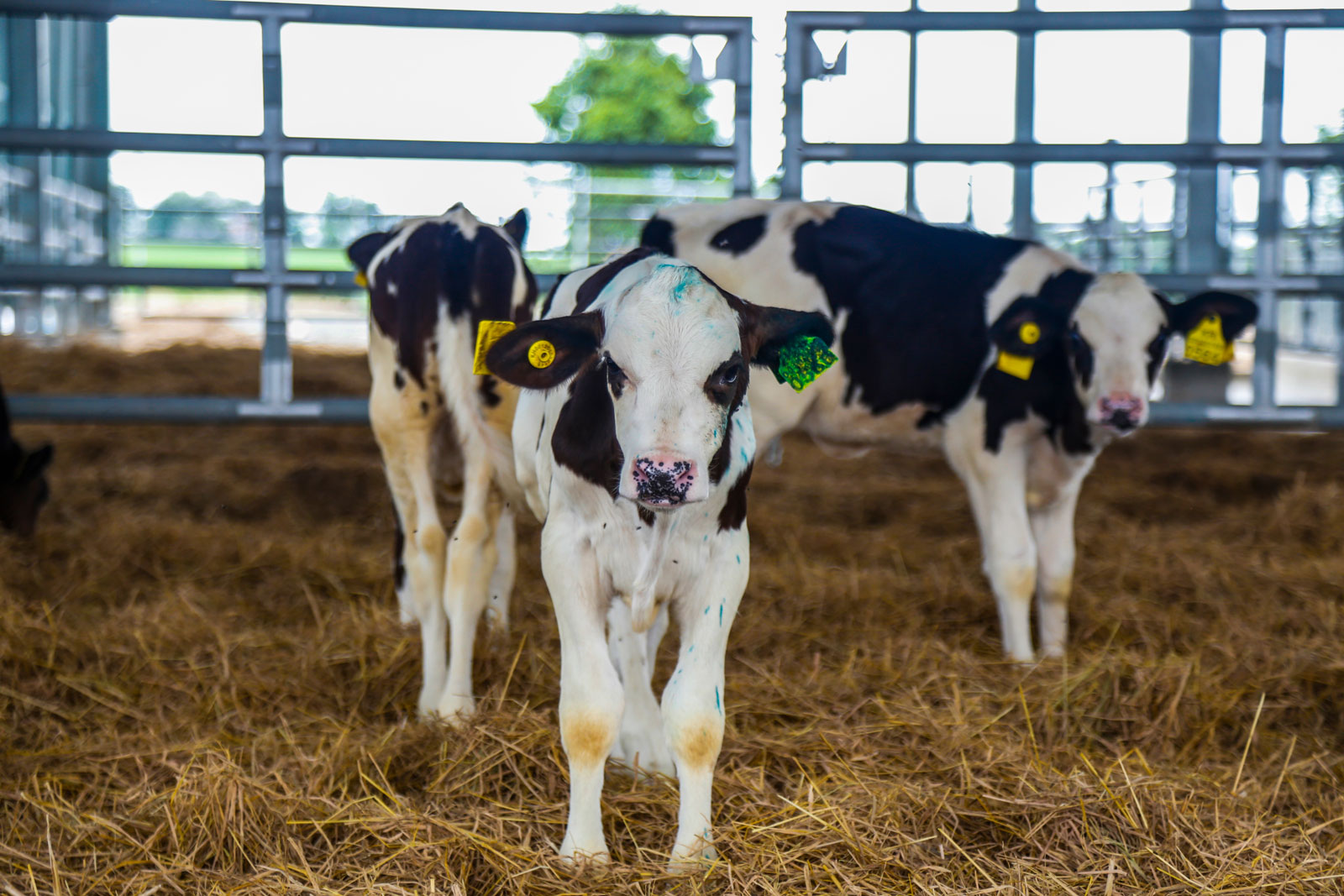The farms of rural Cambodia don’t usually evoke images of milkmaids and butter churns. But then, maybe that’s to be expected in a country where much, if not most of the population is lactose intolerant.
Even in that context, a mixed group of Cambodian and Israeli entrepreneurs are placing a major bet on finding green pastures ahead for the local dairy industry. On a recent morning, Chy Sila and Uri Rahamim navigated potholed roads to make a regular visit to Kirisu Farm, a 300 hectare spread about 35 km outside Phnom Penh and the newest entry to the domestic production side of an otherwise import-dominated Cambodian dairy industry.
The farm only started producing milk in July, but with a bullish initial investment of about $10 million and more than 500 cows and counting, the dairy entered the market as Cambodia’s largest producer of fresh milk, pumping out as much as 8,000 litres of the white stuff per day. As the cows continue to adjust to life in Cambodia, Sila said the farm hopes to bump up daily production to 12,000 litres.
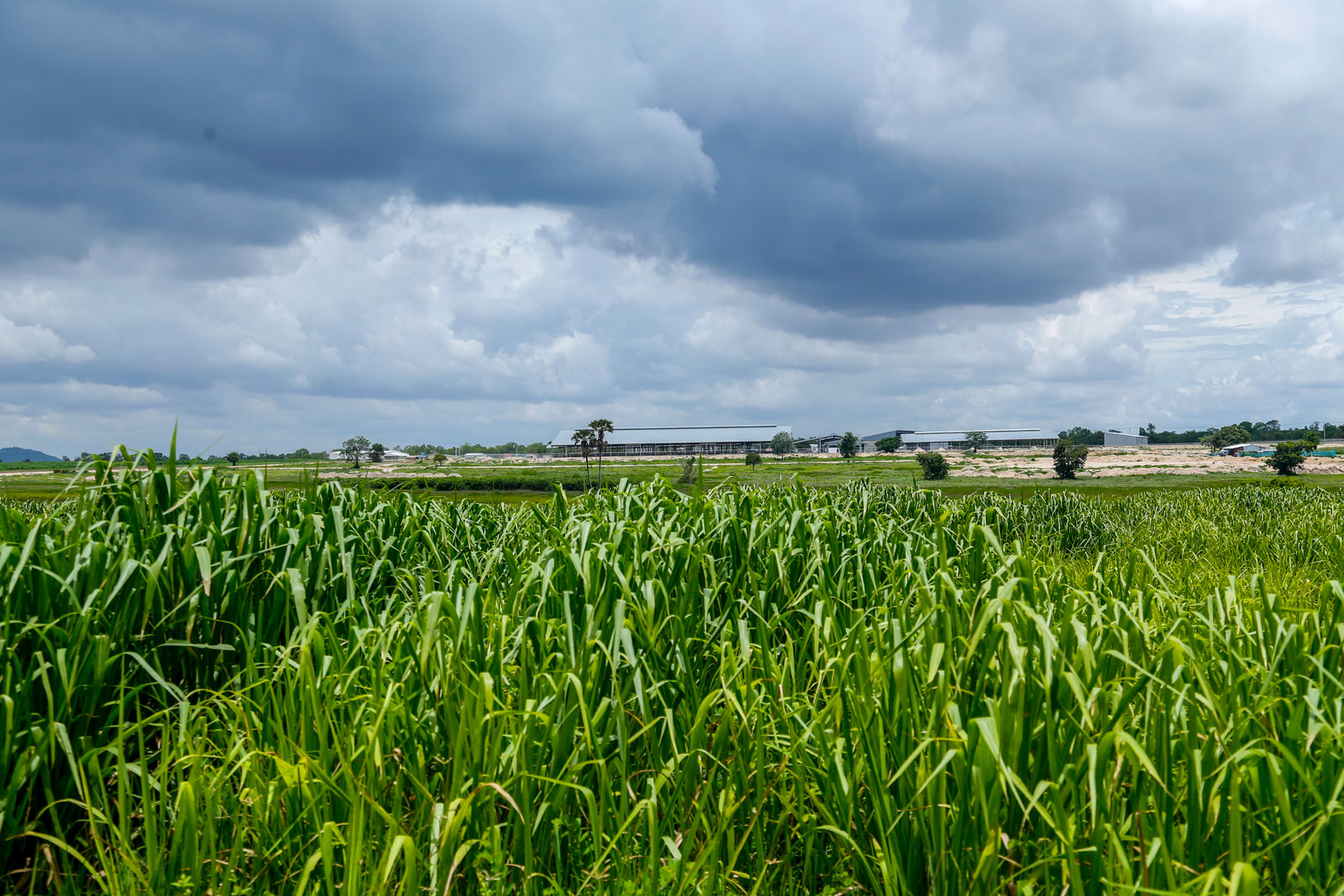
This is like a model for the Cambodian agriculture industry … Nobody should compromise
Kirisu now joins the country’s two other dairies, Moo Moo Farms, just across the Mekong from Phnom Penh, and Techo Sen Russey Treb Milk, in Preah Vihear province, both of which produce on a less industrial scale.
Cambodians have no traditional uses for dairy in their cuisine, preferring coconut milk to whatever comes out of an udder, and so a herd of imported, pregnant black-and-white Australian Holsteins may seem an odd investment. But for Sila, a prominent Cambodian businessman who oversees a portfolio of companies such as Sabay Digital Media and CBM Corporation, a major food and beverage franchisee, Kirisu Farm is the realisation of a much broader goal of agricultural modernisation.
“This is like a model for the Cambodian agriculture industry,” Sila said, maneuvering a pickup truck down a gravel country road. “Nobody should compromise.”
The original seed of an idea for a farm came from a trip to Israel in 2009, about three years after Sila first met Rahamim, an Israeli-American with a tech background from California’s Silicon Valley. Among other things Sila noted in the so-called “startup nation”, he was especially drawn by the advanced agricultural processes on display.
“I thought, one day, maybe I can bring all this Israeli technology to Cambodia and make a good farm, but at the same time, can also transfer the know-how to the local people,” he said, standing years later outside the main offices at Kirisu where the Israeli and Cambodian flags are flown side-by-side.
“Having this technology alone is not enough, we need the skill set and the people to manage it. We don’t need a lot of people, but we need good people – higher discipline, well trained, able to operate a sophisticated farm. This hasn’t happened before in Cambodia.”
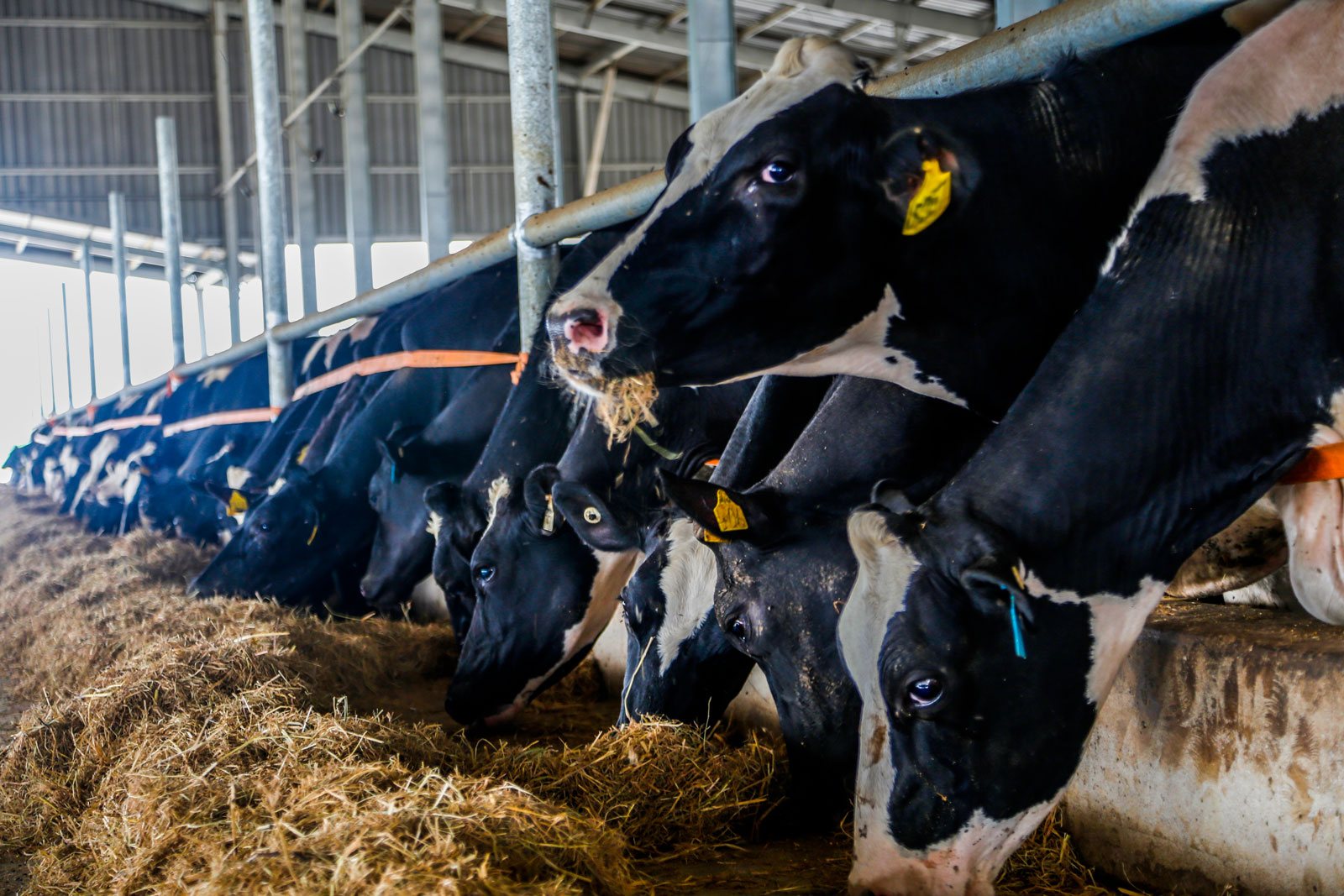
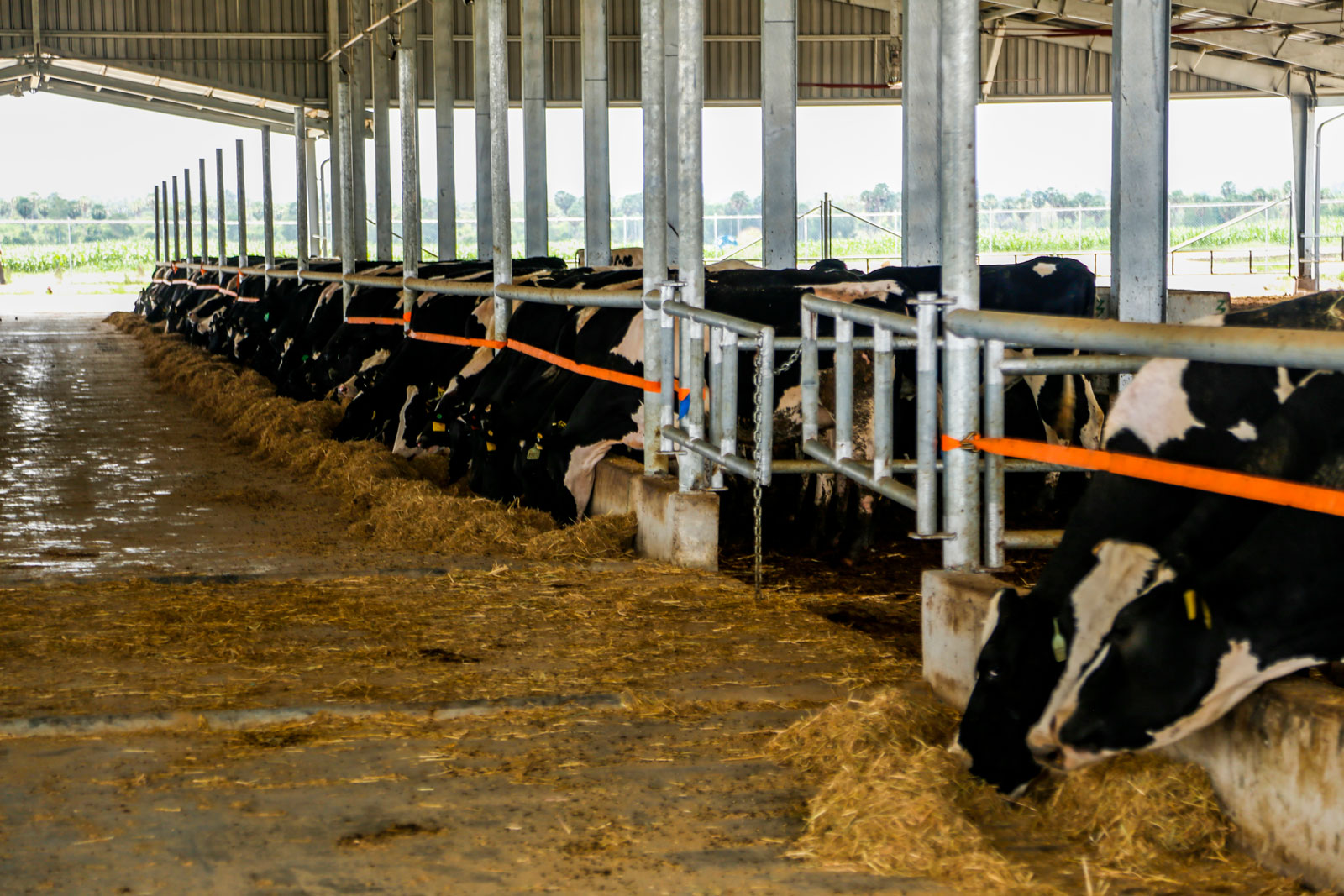
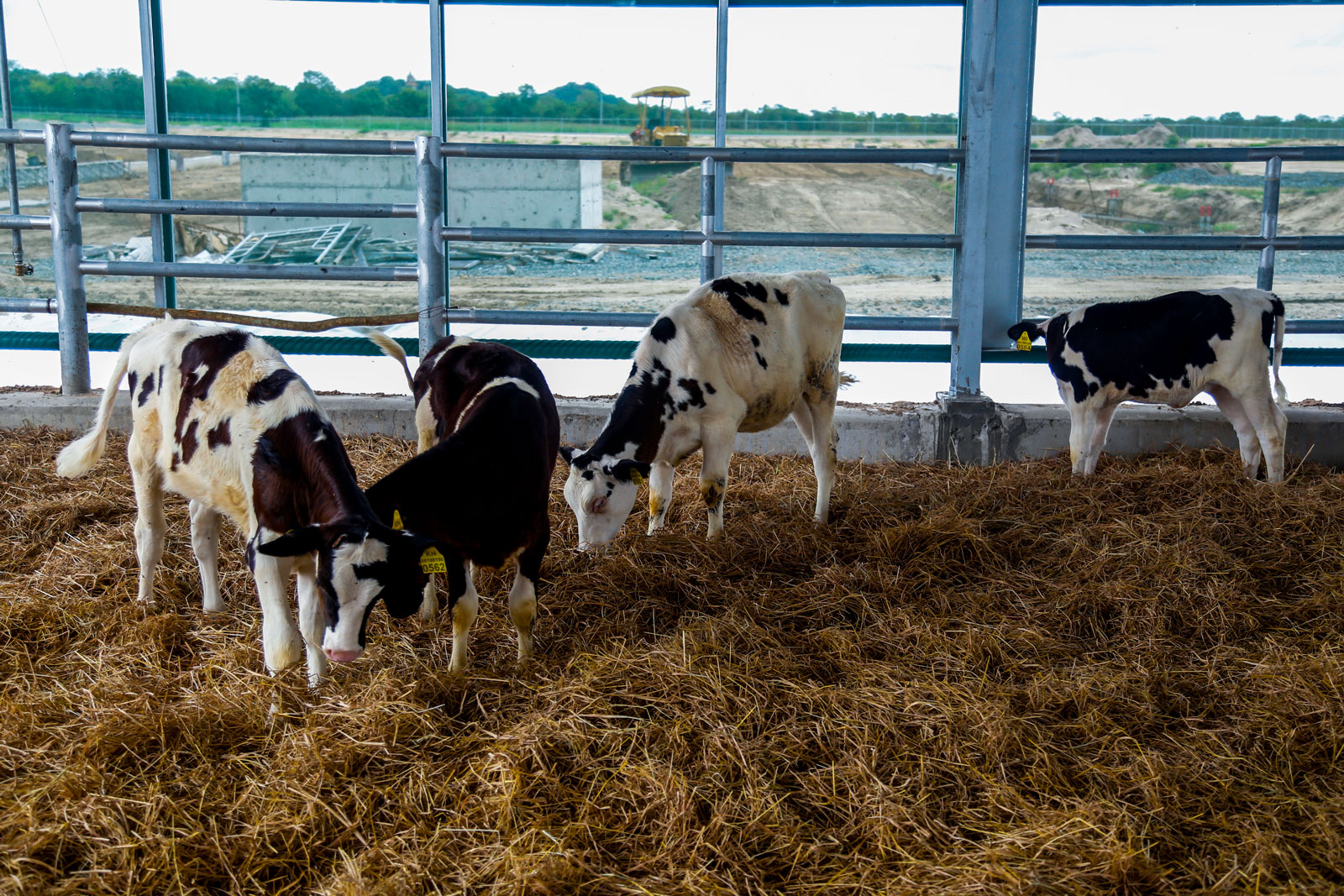
The Kingdom’s agricultural sector has traditionally relied on labour-intensive practices, and its largely informal nature has not provided much incentive for serious capital investment or agribusiness development. Israel, on the other hand, has taken a path to development that has made the most of its limited land area with a tech-infused approach that Cambodian planners have hoped to emulate.
In the past decade, hundreds of Cambodian university students have travelled to Israel to work and learn in the country’s tech-infused agriculture industry. Agriculture officials in Cambodia have expressed interest in the past of deepening the connection with the Middle Eastern state, and Rahamim says a future partnership with the Israeli foreign affairs ministry could provide additional support in the next few years.
Today, about 60 people now work at the farm, mainly staff hired and training from local areas, but also including a group of Israeli technicians specialised in dairy. Rahamim estimates about 85% of Kirisu’s land, which is leased from the Ministry of Agriculture, is planted over with a mix of corn, tall Mombasa grass and a kind of legume called stylo to produce an in-house feed for the cattle. The farm imported about $1.5 million in machinery to cultivate the leafy mix.
“We have the complete process here,” Rahamim said from a field of the towering Mombasa grass. “We start at the feed crop, but then we obviously have the cows, the milking and processing, the packaging facilities.”
If the system at Kirisu is bottom-up, it’s largely to avoid the major pitfalls that have sunk nearly all Cambodian dairy schemes that have come before.
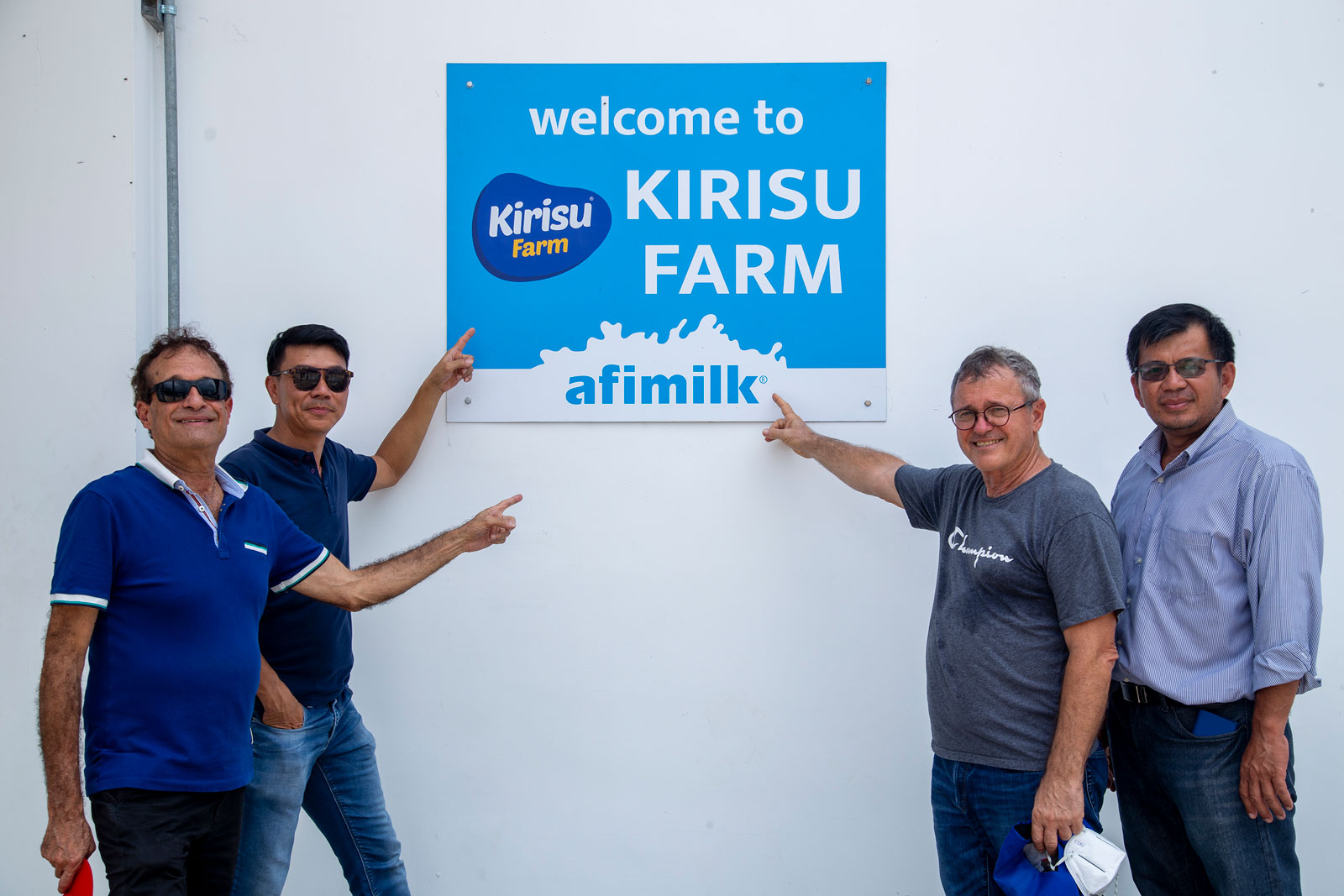
Pen Miranda has been director of the Dairy Cow Raising Association of Cambodia for about five years now, but he can outline the long arc of his country’s dairy history from its early successes in the 1960s as an exporter with the state-run Apsara Milk Factory.
That bright start didn’t last though, and the sector was all but obliterated through war time and the Khmer Rouge era. Later, in 1998, multinational giant Nestle came in and supported a cross-breeding program between local cattle and imported dairy cows, partnering with local farmers in a bid to create a more grassroots industry.
Despite the weight of the world’s largest producer of dairy goods, the programme ground to a halt in 2002 with little to show for it. Later efforts with multimillion-dollar-price tags also went to naught, including a 2009 proposal from the Mong Reththy Group and a British partner. Two years later, a joint venture from Cambodian developer 7NG Group and Sweden’s HPT Dairy Company petered out as the much-hyped project failed to get off the ground.
Today, Cambodians are eating more dairy products than they used to, but are still light consumers in the grand scheme with industry estimates putting average consumption in the Kingdom at about five kilograms of dairy per year. Consumers in Thailand and Vietnam eat about four times that in a year, which is still a paltry heap compared to most residents of European nations who eat an average of hundreds of kilos per year.
That said, agribusiness firms have projected Southeast Asia as having major growth potential of roughly seven billion litres within the next 10 years, boosting the total demand of the largest ASEAN economies to nearly 19 billion litres per year. With increasing demand through the region, the growth of domestic dairy producers seems to be more economically viable – whether that be through local consumption or possibly even exports.
Miranda works mostly with smallholder farmers to promote the industry on a local level. He also worked with the founders of Moo Moo, former Mormon missionaries Kenny Matthews and Matthew Boyd, to import their cows, build a local staff and process animal feeds.
“We work with anyone who seeks our help, but not many farmers are interested yet,” Miranda said. As some explanation for that, he points to a general lack of information about dairy in the domestic ag sector, layered with infrastructural issues, such as inconsistent electricity, that make production difficult.

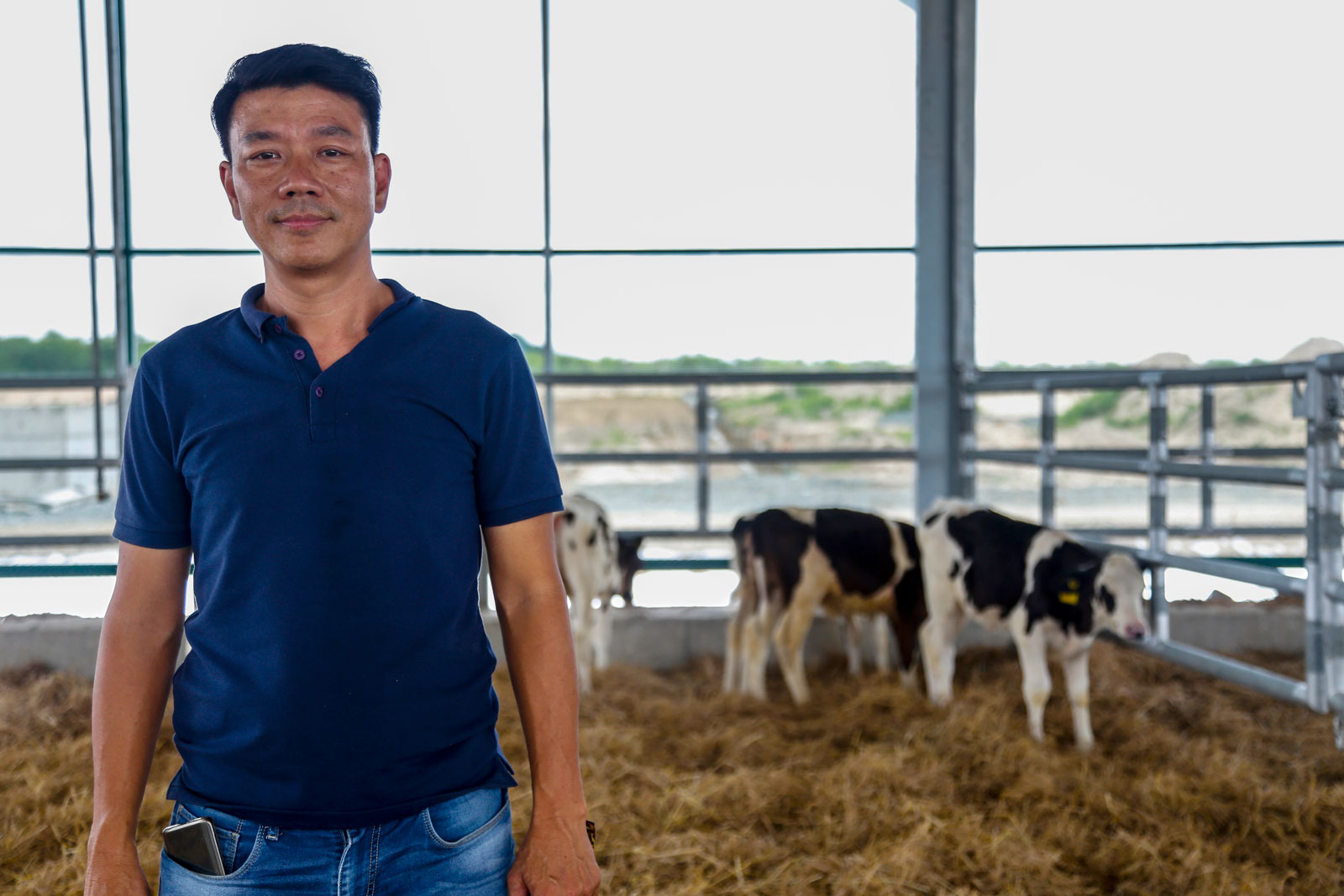
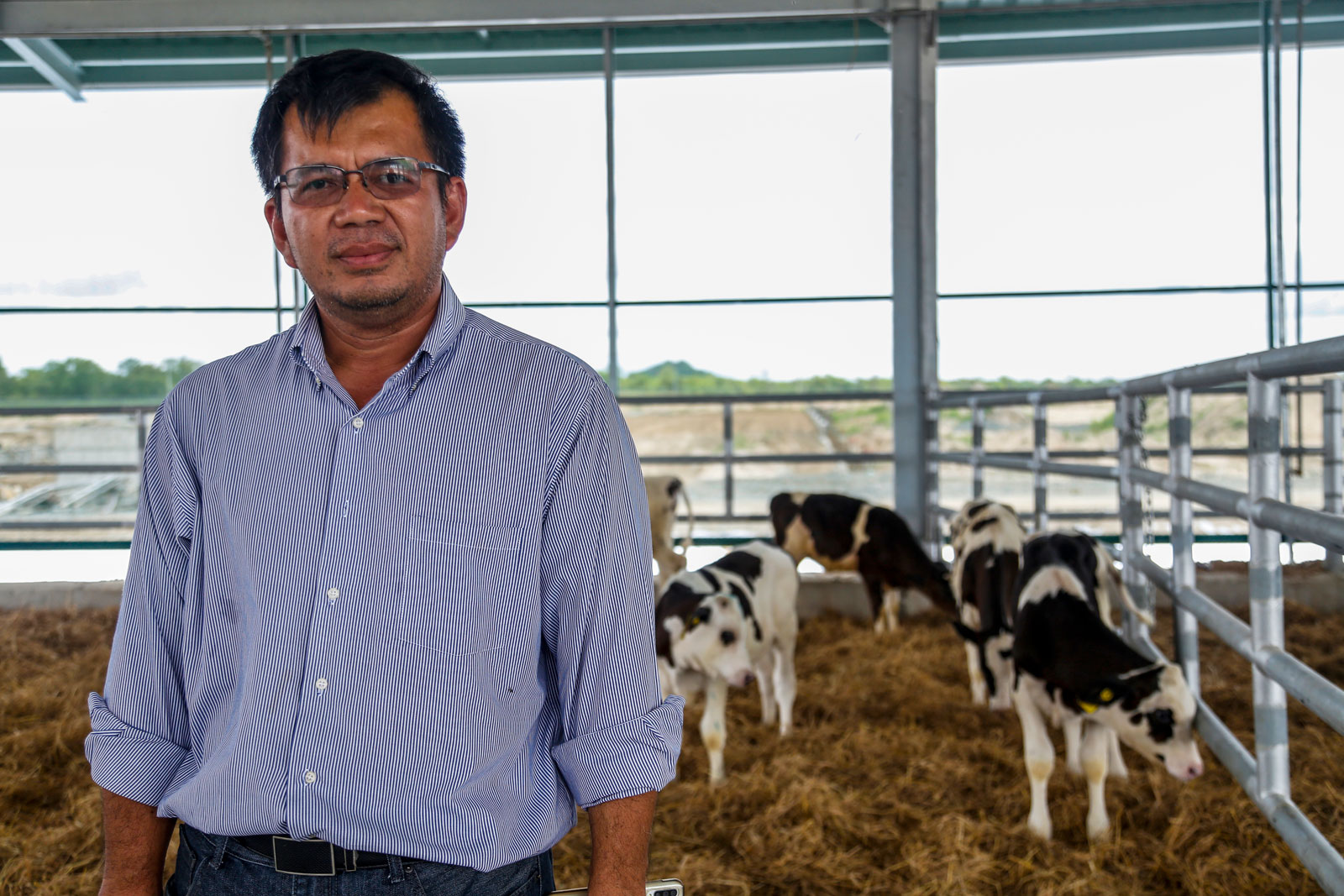
If local producers can get the price down, I think it will increase demand, but I don’t think they’ll be able to do that in a short period
With these conditions, it wasn’t until 2016 and the founding of Moo Moo Farms that Cambodia once again had its own fresh milk producer of any commercial scale. By then, the market had long since been captured by imports from neighbouring Vietnam and Thailand, most of which sells under big brand names like Meiji, Dutch Milk or a slew of yoghurt labels.
Even Cambodia’s homegrown-sounding processor, Angkor Dairy Factory, has been snapped up by milk giants elsewhere in Southeast Asia. Originally founded in 2015 as a joint venture between a local firm and Vietnam’s multi-billion-dollar dairy Vinamilk, Angkor Dairy was fully bought out two years later by the larger partner.
Today, Miranda says, between 80-90% of Cambodia’s dairy products are imported, fetching the lion’s share of a market for liquid milk he estimates to be as large as 300 million litres sold per year.
“First, we think we cannot produce by ourselves, on the domestic side, but then foreign importers think they can sell for a greater price here as well,” he said. “If local producers can get the price down, I think it will increase demand, but I don’t think they’ll be able to do that in a short period.”
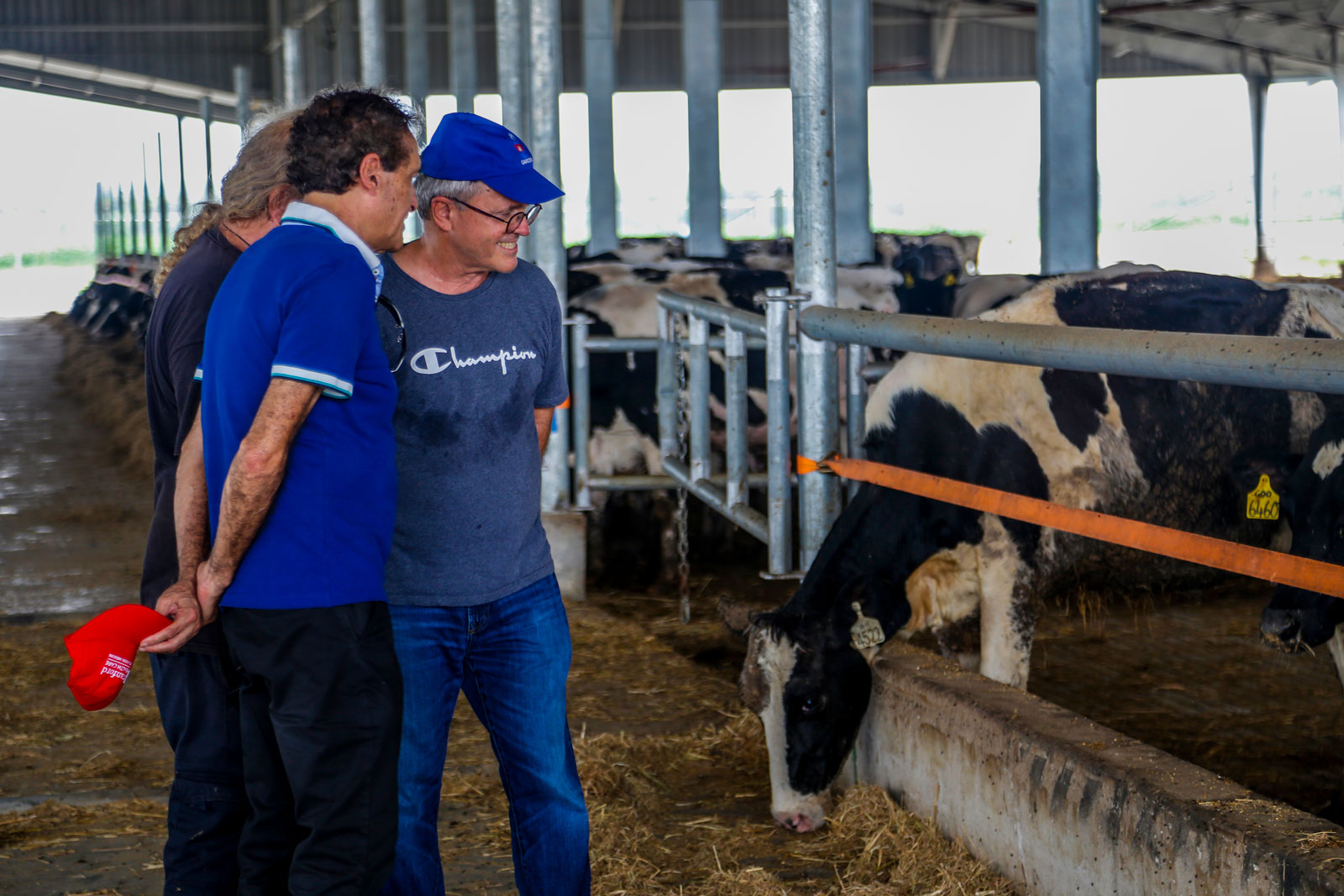
As he toured the farm with a bank delegation, Rahamim was realistic about the farm’s ability to compete with large outside suppliers.
“We’re not going to capture all of the market, maybe 10-15% of the market at best, but we feel we have the ability to scale up,” he said. “Of course, we won’t expand until we see how we’re doing in the market, but that’s the plan.”
Both he and Sila are quick to emphasise the technical proficiency of their farm, the name of which translates from Khmer to ‘mountain of paradise’. The operations of Kirisu run on a management platform known as Afimilk, an Israeli-made enterprise software, and each heifer on the farm is implanted with a chip that collects the animal’s biometric data and reports it back to the system, which can study it in real time.
With the help of that data, the dairymen say, the computer can tell when their cows are most-fertile, when they’re ready to give birth and when they’re showing the earliest signs of illness. The gates that open and close to steer the flow of the herd are in on the act as well, and can tap into the ‘Internet-of-Things’ to communicate with the chips on each cow. With access to steady information, the gates can act on their own to do such tasks as steering cows that may be sick to a quarantine area for examination by the house vet.
Even the fans at Kirisu are smart, Rahamim says. The ones the team has imported to keep the heifers from overheating can feel and measure the air as it passes the fan-blades, deciding when to turn hard and when to let natural cooling take the stage.
There’s a lot of financial backing that goes into something like Kirisu. Besides Sila and Rahamim, the individual founders also include Kouch Sokly, a long-time partner of Sila’s, and Israel Teiblum, a venture capitalist from the eponymous country. On the institutional side, the dairy outfit is funded by Emerging Markets Investment Advisers, a Singapore-based private equity group, and Nexasia, a Japanese fund that focuses on projects in Cambodia and Vietnam.
Eventually, Sila says, the hope is that the farm will be producing enough milk not only to prove its investment a success, but to change the face of the domestic dairy industry.
“Right now, [milk] is expensive because it’s imported, and so it’s limited to just the middle and upper classes,” he said. “When we get production up, I hope to lower costs so everyone can drink it.”
